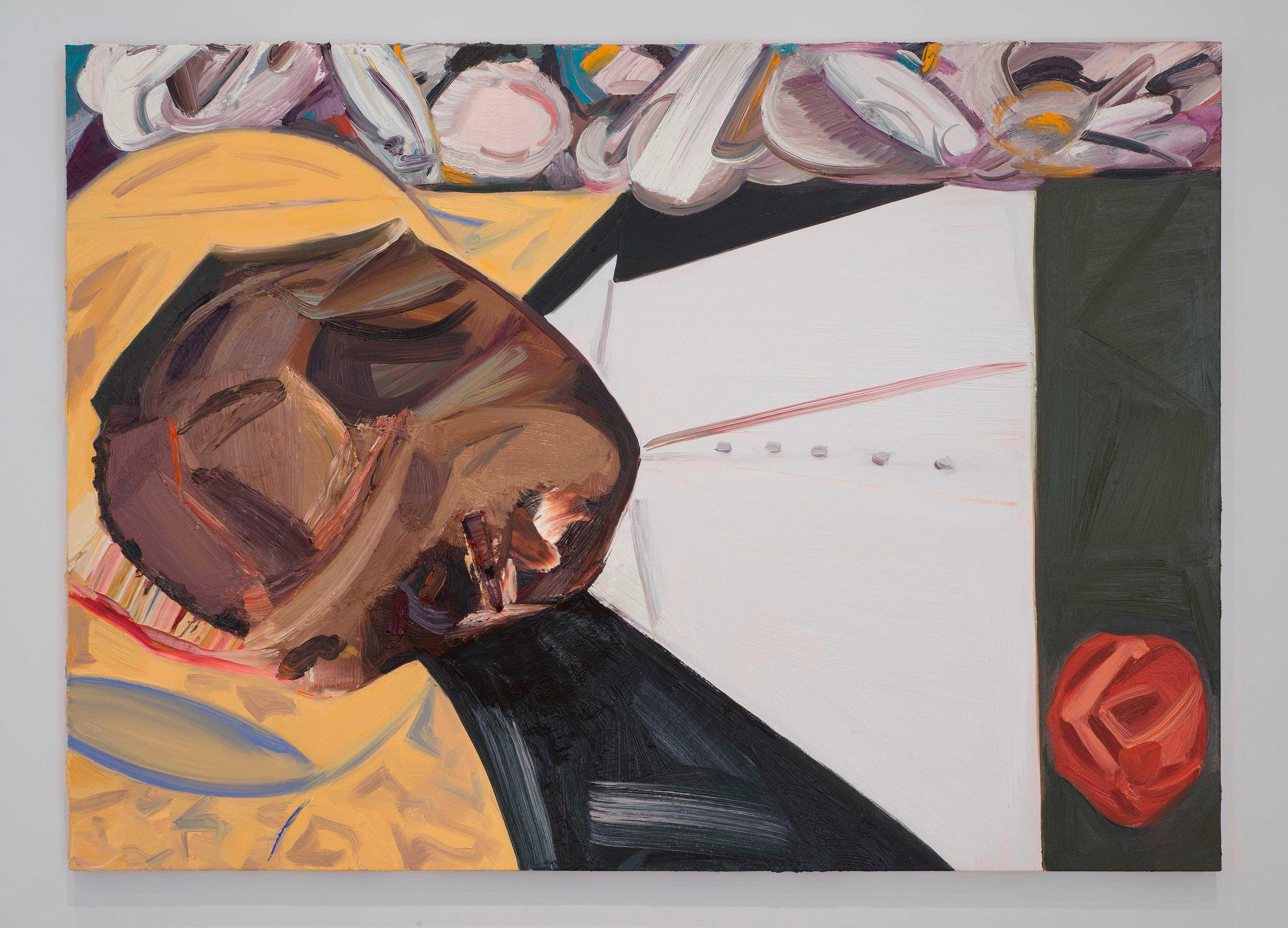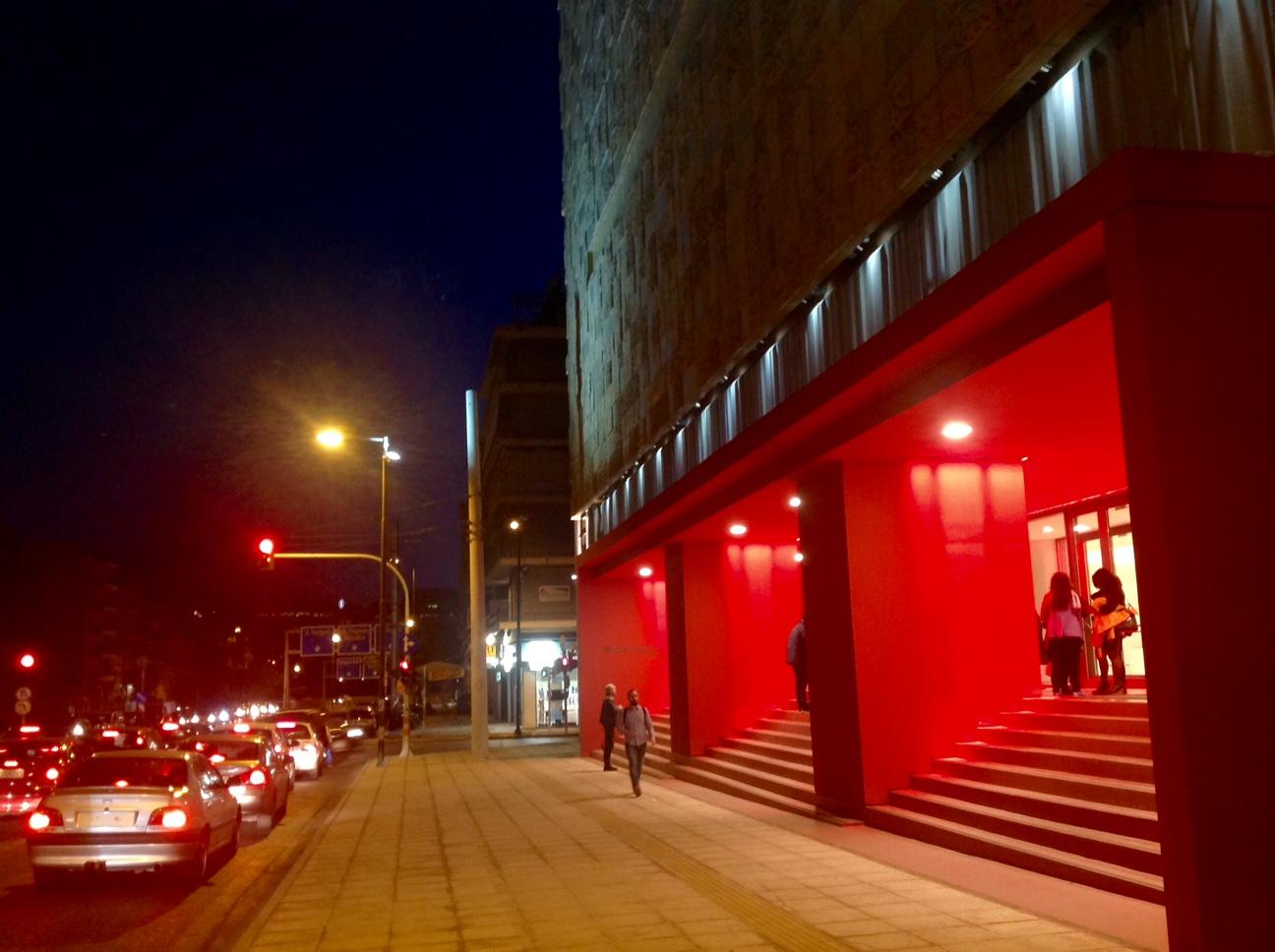Art world stops: Disjunctions of object, identity, and place
archive

Art world stops: Disjunctions of object, identity, and place
Unlike other biennales hosting global exhibitions by artists from many different parts of the world, the Whitney Biennale is an exhibition of American art started in 1932 at the Whitney Museum of American Art in New York.1 Yet this resolutely domestic focus has not insulated it from controversy and critique. On the occasion of this year’s 2017 biennale, a letter by a Berlin-based black artist, Hannah Black, has called for the removal and destruction of a displayed artwork—a rendition by New York-based white artist Dana Schutz of the funeral of Emmett Till, a black youth lynched by white men in 1955.

Open Casket (2016), by Dana Schutz.
Entitled Open Casket (2016), this abstract painting draws upon the decision of Till’s mother to display her son’s disfigurement to the rest of the world at his funeral. Starting from the biennale opening, a protest was staged directly in front of the artwork. The painting quickly became the epicenter of discussions about long-standing and interlinked issues of authorship, appropriation, and value production along the axis of race. The protest around Open Casket targeted the artist’s racial identity and the impossibility of her representing violence against black bodies, and denounced the inappropriateness of gaining value from it. On the other hand, a work by black artist Henry Taylor, The times thay aint a changing, fast enough! (2017) depicting the police shooting of Philando Castile in his car, was not subject to scrutiny. In her very rich treatment of the controversy, Coco Fusco placed the two artworks in the same frame: in her view, the most perplexing critique against Schutz had been her use of abstraction, “as if the only ‘responsible’ treatment of racial trauma is mimetic realism. Strangely, even though Henry Taylor’s painting of Philando Castile is no more realist in its rendering than Schutz’s, he’s been left alone by protesters.”2 In another analysis, Adam Schatz invoked Edward Said to assert that, “Perhaps, in the juxtaposition of Dana Schutz’s Open Casket and Henry Taylor’s painting of Philando Castile, the Whitney Biennial is making a small contribution to the telling of America’s contrapuntal racial history.”3 Moving in the direction of Said’s contrapuntal analysis, Smith cogently argued: “the paintings by Mr. Taylor and Ms. Schutz share an all-too-American subject, that of hateful, corrosive white racism. Who owns that?”4
However, together with the proximities that were invoked in this controversy, race being the missing one, place and space too need to be discussed. Open Casket had previously been exhibited in a show in Berlin, “where it caused no controversy.”5 In this case, issue of proximity and distance with respect to place played out (together with other elements) in interesting ways: proximity to the artwork did not trigger a reaction—the painting’s display in Berlin passed unnoticed—but later this location became embroiled in the controversy at a distance, possibly thanks to the Whitney Biennale’s global visibility. On the other hand, the exhibition’s embeddedness in a country of highly racialized economies and brutal acts of violence against black communities possibly accelerated the passage from what had started out as a digital demonstration to a physical one by staging the protest in front of the painting on the museum’s premises. The Whitney became the theater for contesting the right to represent what, where, and how.
Another set of controversies arose when Athens was designated as a site and lens for the quinquennial documenta 14, which this year it shares with Kassel, the event’s historical location since 1955. The choice became problematic even before the artworks were put on display, as Greece’s former finance minister, Yanis Varoufakis, had already labelled it “crisis tourism” and contended that “It’s like rich Americans taking a tour in a poor African country, doing a safari, going on a humanitarian tourism crusade. I find it unhelpful both artistically and politically.”6 He added that if they moved documenta to Athens for one edition, they should do it entirely in Greece. With documenta 14 entitled Learning from Athens, Varoufakis’ comments only marked the beginning of a long series of critiques about the presence and performance of a German institution in the context of recent tensions between the two countries. The lexicon of these critiques was replete with terms like “colonial,” “exotic,” “the other,” and “periphery”—as if Vasco Da Gama had landed on Attica’s shores (see companion essay). For example, reviewing a pre-exhibition public event called ‘Exercises of Freedom’, Zefkili commented: “Even though it chooses to identify with the ‘trans south’, to give speech to the ‘other’, and disrupt the status quo, Documenta 14 [sic] did not cease to be a mega-institution imposed on a small peripheral scene with many pathogens, currently living its fifteen minutes of fame as a southern experiment of creativity and flexibility in times of crisis.”7
In the context of a mega exhibition concept that sounded “reparatory” in spirit and one that was indexed as a southern event with a pedagogical mission for the world, a multitude of artworks by artists of diverse provenance were brought together in dozens of venues deployed by documenta 14 in Athens. To challenge the universal settings discussed previously in our companion essay, the question of what the material world looks like when people and artworks are explored in relation to the transformative and charged role of place, space, and the built environment of documenta 14 nevertheless begs further questions: can discrete artworks be seen outside the contested presence of documenta 14 in the city? Can they stand in isolation and be divorced from the larger problematic framework? If an exhibition’s emplacement is believed to be critical to its reception, then the answer is in the negative.

The National Museum of Contemporary Art in Athens.
Nicolacopoulou argued that much of documenta 14 “is concerned with a global mapping of a shared contemporaneity of postcolonial thinking that could have been displayed and experienced anywhere. (Reminiscent, even, of other documentas.)”8 Paradoxically then, if this exhibition could be moved to any other location in the world, “what difference has Athens made?” And is “this kind of moving” what art world actors, artworks, and audiences want?
[T]he question of what the material world looks like when people and artworks are explored in relation to the transformative and charged role of place, space, and the built environment… begs further questions
Perhaps the gesture that sealed the string of criticisms of documenta 14 was the “theft” an artwork by the group Lgbtqi+ Refugees in Greece. This group had been paid to tour Athens with Roger Bernat’s replica of a monolith stone used for oaths in ancient Greece. The stone was subsequently destined for Kassel where Bernat and his collaborator, Italian dramatist Roberto Fratini, were to bury it in a theatrical ceremony. Instead, the Lgbtqi+ Refugees group high-jacked the sculpture during the tour of Athens, saying that they would not return it to the artists whom they accused of fetishizing refugees as part of a lavish, high-profile arts event staged for the wealthy European elite.10 The artists vigorously protested the gesture.
Unlike in the case of Open Casket, banishing an artwork from public viewing through its seizure (rather than disrupting the viewing like at the Whitney Biennale) was not aimed at the artwork itself. Rather, it allowed the refugees and “others’” to return to public visibility—if not in the way envisaged by documenta 14—and it testifies to the umbilical cord between an artwork and an exhibition’s conceptual shell made fragile by its own geopolitics.
Conclusions
Within the global art world—a synonym of circulation, encounter, and exchange—one wonders whether any space can effectively accommodate the meanings attached to artworks such as the ones discussed in this essay and its previously published companion. Can all artists always be viewed as “suitable cultural producers” able to create art on any subject matter? Is any “place” always appropriate to host particular artworks? Or, aren’t all exhibitions at global art institutions inevitably embedded in society, culture, and politics—even when they appear to be variously disconnected from them? Will they always be subject to unintended consequences? Apparently, the distinct resonances of place, identity, and history have not been neutralized by the global institutional circuit or by the repetitiveness of the large exhibition form.
The lineages and contemporary manifestations of colonialism, slavery, racism, and neoliberalism along with their attendant forms of violence enter the global exhibition circuit across three continents to raise questions about spaces, places, identities, and practices, helping to refashion the geographies of agency in such ways that the terrains of global North and South appear hardly to differ from one another.
An effective plan to advance this conversation is contained in a documenta 14 booklet for the public program in Athens entitled ‘The parliament of bodies’. Aimed at creating a transnational “public sphere in Athens and Kassel,” the booklet proffered the following questions, which although specific to this exhibition could be applied to any other large-scale exhibition or biennale:
"How to produce critical agency in a mega-exhibition within a global neoliberal economy? Can the museum work against its own colonial and patriarchal regimes? Can the tension between Athens and Kassel be used as a critical space to conceive of an alternative cooperative artistic and activist project beyond the framework of nation-states and corporations? We will fail. But we will try."
We will wait.
1. About documenta 14: information booklet, Whitney.org
2. Fusco, C. 2017. “Censorship, not the painting, must go: On Dana Schutz’s
3. Schatz, A. 2007. “Raw material.” LRB blog (Italics in the original)
4. Smith, R. 2017. “Should art that infuriates be removed?” New York Times
5. Tomkins, C. 2017. “Why Dana Schutz painted Emmett Till.” New Yorker
6. Kahane, L. 2015. "Doing documenta in Athens is like rich Americans taking a tour
Spike Art Magazine. For the continuation of this conversation and a discussion
of the political and cultural economies underpinning documenta 14, see also
Fokianaki i. and Varoufakis Y. (2017) “‘We come bearing gifts’—iLiana Fokianaki
and Yanis Varoufakis on Documenta 14 Athens.” Art Agenda
7. Zefkili, D. 2017. “‘Exercises of Freedom’ Documenta 14.” Third Text
8. Nicolacopoulou, M. 2017. “documenta 14: The view from Athens.” Ocula
9. Masters HG. 2017a. “Documenta 14, Kassel (Part 1).” ArtAsiaPacific
______ 2017b. “Documenta 14, Kassel (Part 2).” ArtAsiaPacific
10. Voon, C. 2017. “LGBTQ Refugee Rights Group Steals Artwork from



